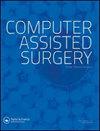Biomechanical comparison of fixation systems in posterior wall fracture of acetabular by finite element analysis
IF 1.5
4区 医学
Q3 SURGERY
引用次数: 8
Abstract
Abstract Background: The use of reconstruction plates and lag screws has been recommended for fractures to the posterior wall of the acetabulum. However, little information about the rigidity of recommended forms of fracture fixation is available. This study aimed to evaluate the biomechanical difference among the fixation systems. Methods: A posterior wall fracture, which is represented by softer elements with lower elastic modulus, was created along an arc of 40–90° about the acetabular rim. Three different fixation systems: screws alone, reconstruction plate with screws, reconstruction plate with T-shaped plates were used to fix the posterior wall fractures to the acetabulum. Results: All three fixation system can be used to obtain good functional outcomes. The reconstruction plate with T-shaped plates was beneficial to increasing the effective stiffness, decreasing the stress concentration and enhancing the rigidity of fracture fixation. So this fixation system served an ideal result in the analysis. Conclusion: Theoretically, the reconstruction plate with T-shaped plates system may reduce many of the risks and limitations compared to the other fixation systems. This fixation system may result in a clinical benefit.髋臼后壁骨折固定系统的有限元生物力学比较
背景:重建钢板和拉力螺钉被推荐用于髋臼后壁骨折。然而,关于推荐的骨折固定形式的刚度的信息很少。本研究旨在评估不同固定系统的生物力学差异。方法:以较软的低弹性模量为代表的后壁骨折,沿约髋臼缘40-90°的弧线形成。采用三种不同的固定系统:单独螺钉、重建钢板联合螺钉、重建钢板联合t型钢板固定髋臼后壁骨折。结果:三种固定系统均可获得良好的功能效果。采用t型钢板的重建钢板有利于增加有效刚度,降低应力集中,提高骨折固定刚度。因此,该固定系统在分析中提供了理想的结果。结论:从理论上讲,与其他固定系统相比,重建钢板与t型钢板系统可以减少许多风险和局限性。这种固定系统可能会产生临床效益。
本文章由计算机程序翻译,如有差异,请以英文原文为准。
求助全文
约1分钟内获得全文
求助全文
来源期刊

Computer Assisted Surgery
Medicine-Surgery
CiteScore
2.30
自引率
0.00%
发文量
13
审稿时长
10 weeks
期刊介绍:
omputer Assisted Surgery aims to improve patient care by advancing the utilization of computers during treatment; to evaluate the benefits and risks associated with the integration of advanced digital technologies into surgical practice; to disseminate clinical and basic research relevant to stereotactic surgery, minimal access surgery, endoscopy, and surgical robotics; to encourage interdisciplinary collaboration between engineers and physicians in developing new concepts and applications; to educate clinicians about the principles and techniques of computer assisted surgery and therapeutics; and to serve the international scientific community as a medium for the transfer of new information relating to theory, research, and practice in biomedical imaging and the surgical specialties.
The scope of Computer Assisted Surgery encompasses all fields within surgery, as well as biomedical imaging and instrumentation, and digital technology employed as an adjunct to imaging in diagnosis, therapeutics, and surgery. Topics featured include frameless as well as conventional stereotactic procedures, surgery guided by intraoperative ultrasound or magnetic resonance imaging, image guided focused irradiation, robotic surgery, and any therapeutic interventions performed with the use of digital imaging technology.
 求助内容:
求助内容: 应助结果提醒方式:
应助结果提醒方式:


